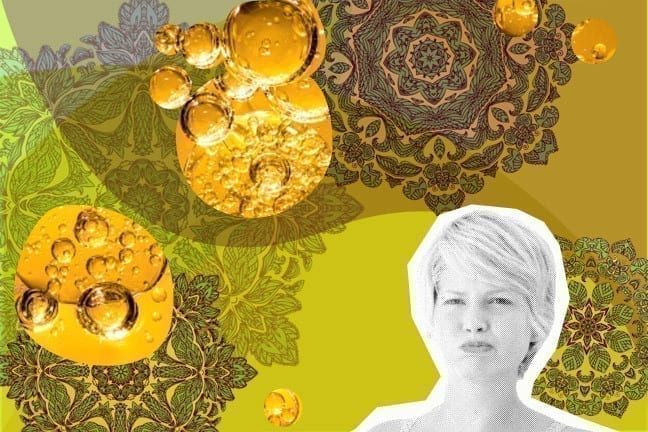A surprising health craze has been generating a ton of buzz: oil pulling. By now, you’ve likely heard of it and wondered what the heck it is. Oil pulling, also known as oil swishing, is actually an ancient Ayurvedic oral health practice known as Gandusha.
“Oil pulling is raging right now and meanwhile it’s 3,000 years old,” points out dentist Gerry Curatola, founder of private dental practices in Manhattan and East Hampton, N.Y.
With oil pulling, you swish about a teaspoon of cooking oil, such as sesame, coconut or sunflower oil, around in your mouth, pushing and pulling it between your teeth, as though you were trying to suck out some spinach stuck between your pearly whites. Vasant D. Lad, president of the Ayurvedic Institute in Albuquerque, New Mexico, wrote in his book, “Textbook of Ayurveda: General Principles of Management and Treatment” that the word “gandusha” comes from ganda, meaning puffed cheeks, which is what you get as you swish around oil in your mouth to supposedly absorb toxins from your system before spitting it all out.
If you Google oil pulling, you’ll see most practitioners recommend moving the oil around in your mouth for 20 minutes (and you thought 30 seconds of swishing around mouthwash was an eternity). But that differs from what some Ayurveda experts say. According to Lad, “in gandusha, the substance is held in the mouth for a couple of minutes.” That’s echoed by a 2011 paper published in the Journal of Ayurveda and Integrative Medicine: “In Gandusha, the oral cavity is filled completely with liquid medicine, held for about three to five minutes, and then released.”
Practitioners swear by oil pulling, claiming it’s improved their oral health and even whitened their teeth. In fact, the practice claims to cure about 30 systemic diseases, including asthma, migraines and diabetes, as well as improve tooth decay, bleeding gums and bad breath.
What does science say? Not much. There’s little to no research on oil pulling’s promise to help a variety of diseases—even the guru of alternative medicine, Andrew Weil, M.D., said there is no evidence to support the claims that it helps with diseases such as diabetes. That said, there are a few studies that show the practice can help improve oral health. As it turns out, sesame oil appears to have antibacterial properties.
A small study in 2009 found that oil pulling with sesame oil reduced plaque-induced gingivitis. And in another small study—this one in 2008—participants rinsed their mouths with about 1 tablespoon of sesame oil for three to 20 minutes for 40 days in a row and reduced bacteria in their mouths by up to 33 percent, as well as lowered the susceptibility to dental cavities.
Dr. Curatola chalks up the resurgence of this ancient practice to people’s continued misguided quest to wipe out all bacteria—think mouthwashes that kill 99 percent of germs and take the good bacteria along with them—when it really should be about achieving a healthy balance of bacteria in mouth, as well as in the rest of the body. “This detergent approach can be very disruptive to this normal, natural, beneficial and protective ecology, which we call the oral microbiome [the mouth’s natural bacterial ecology],” he points out. “If we sterilized our mouths, we would unleash an ecological Armageddon.”
But don’t worry—oil pulling won’t release hell on earth upon your mouth. “Oil pulling is not harmful—it’s bio-neutral,” says Curatola. “If your mouth is a cesspool and your oral microbiome is out of balance, oil pulling can be helpful with surface bacteria. It’s been shown to have a detergent, or cleaning, affect on oral mucosa because of its lipophilic properties, pulling toxins from between teeth. But it’s treating the symptoms and not the cause.”
In other words, swish away if you wish, but you’re not getting out of that trip to the dentist.




































